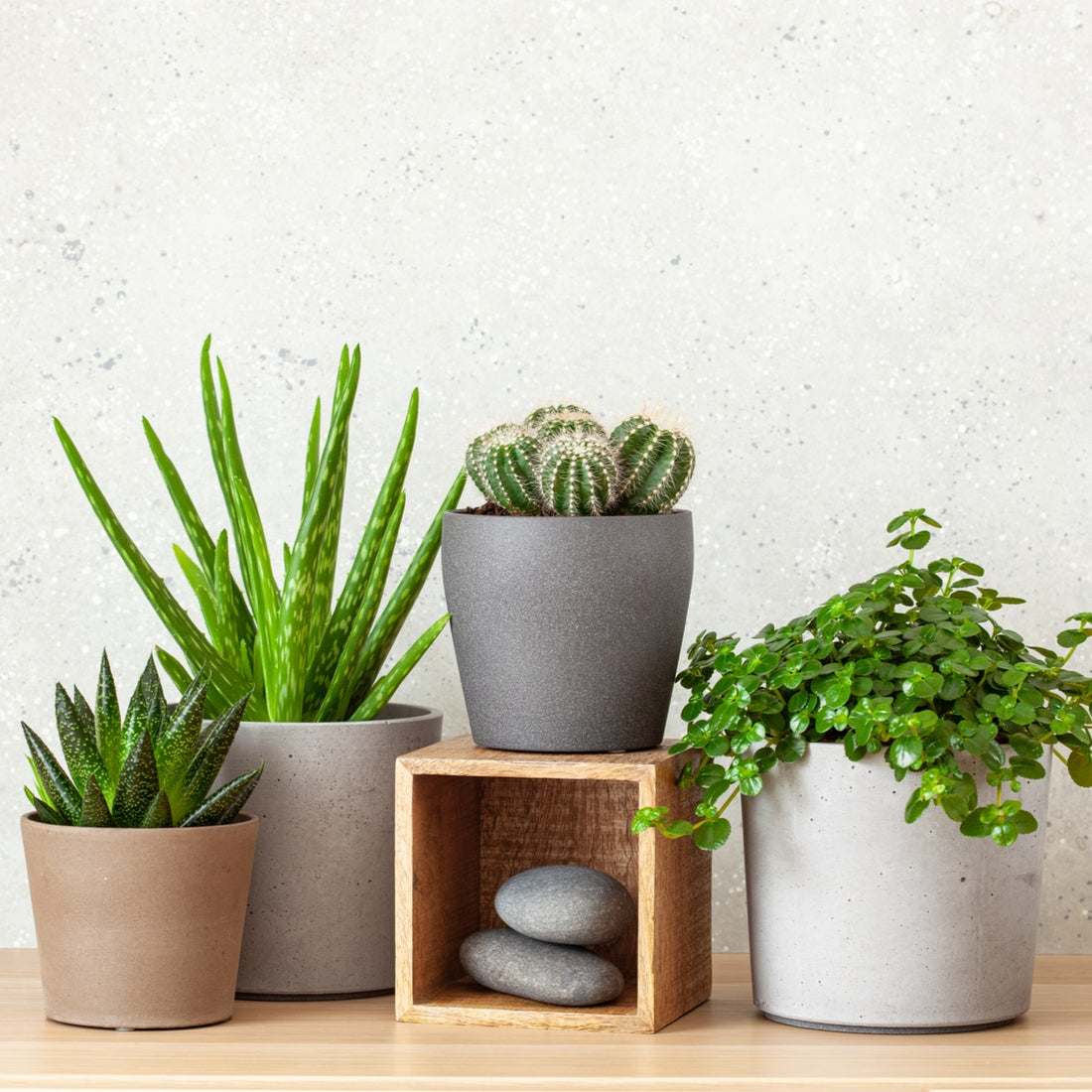
Problems That Might Arise Growing Succulent Houseplants

Succulents are one of the favorite houseplants since they are so easy to grow. They don’t need much attention or much watering and will virtually thrive on neglect, as long as you give them a corner where they can get their required level of sunlight.
Despite the simple maintenance, these fleshy plants aren’t without their problems. Like other houseplants, succulents too, can sometimes fall prey to some common problems. If you’re wondering, “why is my succulent dying,” one of the problems in the following list will answer your concern.
Common Succulent Houseplant Problems And Solutions
Want to keep your succulents happy and healthy? Watch out for the following common problems that succulent houseplants often encounter. In case you find any symptoms, address them with the correct control technique promptly before it weakens your plant any further.

1. Overwatering
The most common reason for the death of succulents is overwatering. Overwatered succulents are often more susceptible to problems than underwatered ones. If the foliage feels soft to touch rather than the tight, plump, healthy texture that you normally see, the plant might be suffering from overwatering. The color of the leaves becomes lighter or translucent and they typically turn weak enough to drop with the slightest touch.
If the plant is showing symptoms of overwatering, place it at a dry spot where it can get ample filtered sunlight. Remove any mushy leaves with pruning shears to slow down the problem for the rest of the plant. Stop watering it until the soil is dry to touch at least 2 inches below the surface.
Alternatively, you can remove the succulent from the pot, shake off the soil clinging to the roots, and trim all rotten roots, appearing black or brown in color. Let the roots dry on a screen before repotting it in a clean pot with fresh succulent mix. Treat the plant with copper fungicide and avoid over watering it.
2. Underwatering
While succulents like to stay on the drier side, sometimes problems may arise if the soil remains too dry for long periods. If you see wrinkled foliage on the succulent that wasn’t watered in a long while, it’s probably telling you it’s thirsty. Underwatered succulents are much easier to revive than overwatered ones. Just water the pot deeply till moisture comes out from the drainage holes at the bottom. An underwatered succulent will most probably start recovering in just two waterings.
Make sure to grow succulents in a well-drained porous mix, preferably a potting mix designed specifically for succulents. Also make sure that the pot has drainage holes at the base of the pot so excess moisture can flow out freely. Maintain a suitable watering schedule, offering water only once the top few inches of soil turn dry.

3. Not Bright Enough
Different succulent varieties have different light requirements. The best practice is to investigate the variety you are growing to learn the exact light requirements for that particular species. Most succulents grow best in bright natural light. Leggy, spindly growth and a loss of the natural, fresh color of the foliage is often an indication that the succulent isn’t receiving its optimal share of sunlight. Move the pot to a brighter location, preferably next to a bright window.

4. Too Bright
Full sunlight is often best for most varieties of sunlight. However, prolonged exposure to direct sun may cause consequences. If the houseplant is placed in direct sun, or is sitting next to the hot glass of a window, scorch marks may appear on the foliage. This is typically experienced with succulents placed too close to a south- or west-facing window. Moving them a little further from the window, preferably maintaining a 5’ distance between the pot and succulent, will keep them healthy.
5. Pests
Sometimes pests may bother your plants, even when they’re growing indoors. Some common pests that may attack your succulent include mealy bugs, aphids, spider mites, whiteflies and scales. If you notice any insects, specks or webbing on the plant, hose them off with water to get rid of the pests. Treat the plant with mild insecticidal soap. Repeat the treatment as needed until the pests are all gone.

6. The Pot Is Too Big
Succulents have a very compact root system. They don’t need to be in a pot too big for their size. It may seem like a good idea to give the plant more space to grow, but in the case of succulents it can have the opposite effect. Excess soil means that the soil will hold water for long periods, making the plant more susceptible to root rot. If the succulent pot is too big for its size, repot it in a smaller pot. Carefully examine the roots of the plant while repotting and trim off any rotten roots before transferring the plant to fresh potting soil.
7. Pups
If your succulent is producing pups, it’s time to separate them from the mother plant and prepare new succulent pots to give away to your friends for free! If the pups continue growing in the same pot with the mother plant, the health of the main plant as well as the pups will soon start depleting. Give the pups a space of their own where they can thrive and you can enjoy the new baby plants in the process!
